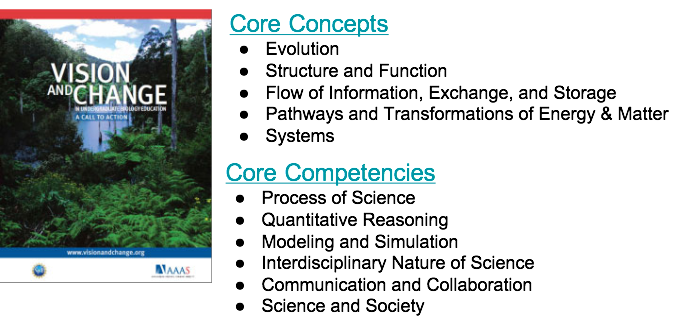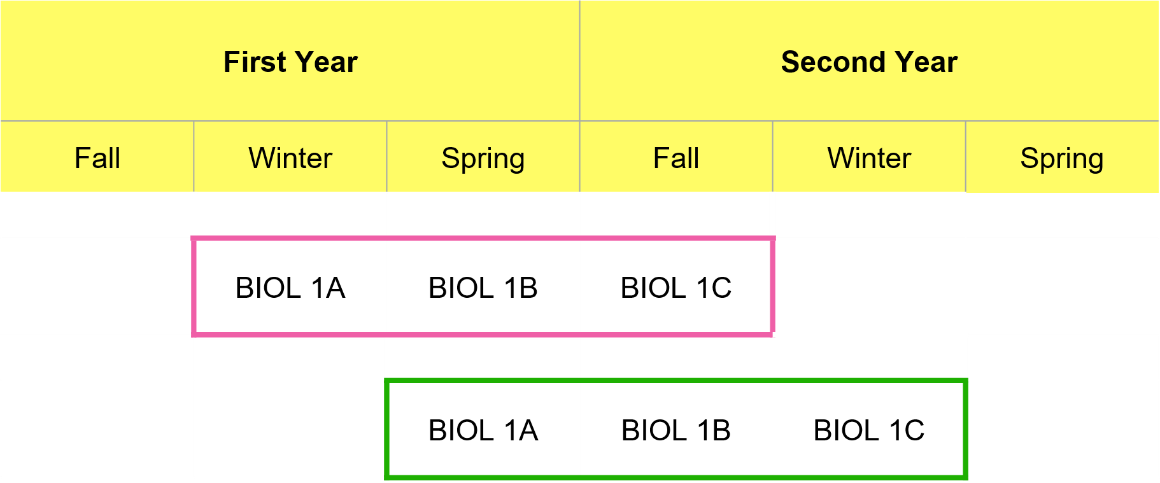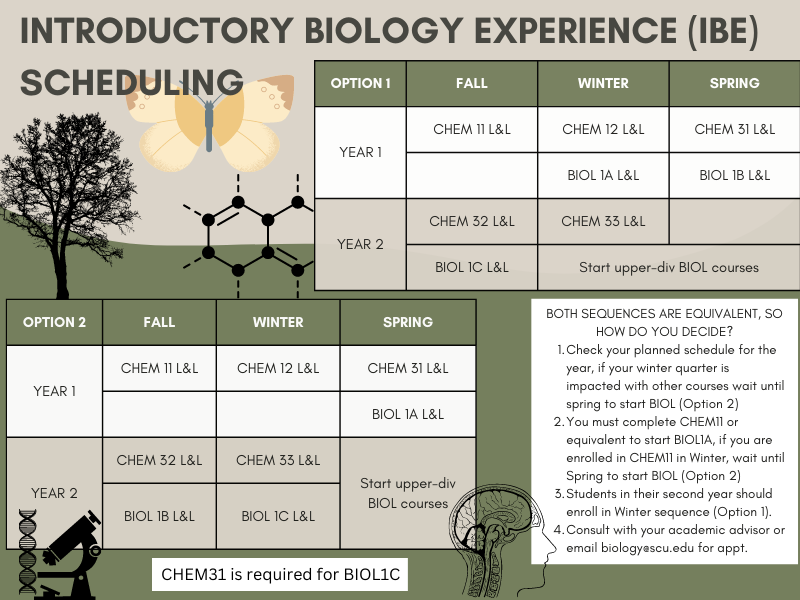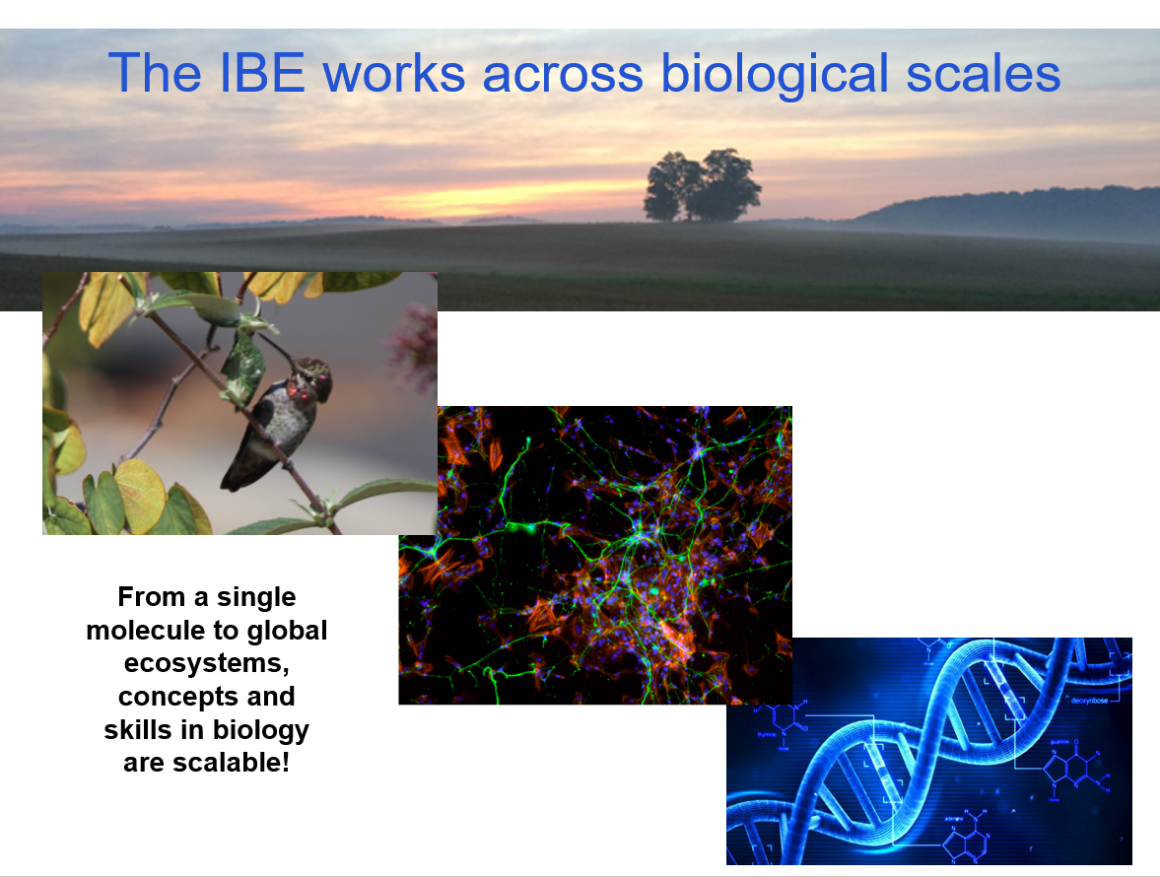What Is IBE?
The introductory biology sequence is a three-quarter-long sequence starting with BIOL 1A. BIOL 1A and 1B have half-labs (i.e., students meet every other week), while BIOL 1C has a full (weekly) lab. This sequence will be taught twice per academic year, once starting in the winter and then again starting in the fall. Therefore, students will finish the sequence in their sophomore year (either in the fall or winter).
What's Covered In The IBE?
The Introductory Biology Experience (IBE), introduces students to an exciting way of understanding biology based on work by hundreds of Biology professors throughout the country. The IBE is organized around the core concepts of biology and critical competencies needed to succeed as a scientist and thinking individual.

Course Descriptions
1A. Energy and Matter L&L
How do organisms obtain elements from their environment, change them to suit their growth needs and acquire the energy necessary to sustain life? How do changing environments impact organisms and ecosystems? Students will explore the global cycle of critical elements and dissect the chemical reactions that incorporate these elements into biological molecules and new biological structures. They will discuss the implications of nutrient availability on growth of a variety of organisms and on interacting populations in an ecosystem. Core to this class is the exploration of the habits of mind that will form the basis of critical scientific thinking throughout the biology curriculum. Laboratory 15 hours. Prerequisites: Concurrent enrollment in or completion of CHEM 12. (4 units)
1B. Information and Evolution L&L
This course builds an introductory understanding of how information is transmitted and utilized in biological systems. Students will investigate how the genetic transmission of information at the molecular, organismal, and population level generates biodiversity and drives evolution. In their studies, students will continue to practice the habits of mind necessary to critically evaluate data and communicate with the greater scientific community. Laboratory 15 hours. Prerequisites: Completion of BIOL 1A with C− or better, and concurrent enrollment in or completion of CHEM 13. (4 units)
1C. Systems L&L
All biological phenomena are complex networks whose members comprise molecules, cells, organs, organisms, and ecosystems. An alteration affecting one of the members could affect the entire network. In this course, students will model biological systems (e.g., organismal body plans, human diseases, endangered natural habitats) in order to predict how they will respond and adapt. Students will also apply the process of science to collect, analyze, and interpret data across biological scales and communicate with the greater scientific community. Laboratory 30 hours. Prerequisites: Completion of both BIOL 1B C− or better; and completion of CHEM 13. (5 units)
-
What To Expect...
- Team taught—two lecturers and one lab instructor
- Student-centered learning
- Active learning
- Teams approach
- Plus lectures and other things you would expect
- Labs

When Should I Start the IBE? Winter or Spring?
The decision on whether to start the sequence in either winter or spring of the first year is left to the student and their advisor. Consult your academic advisor or see a professor in the Biology department.
